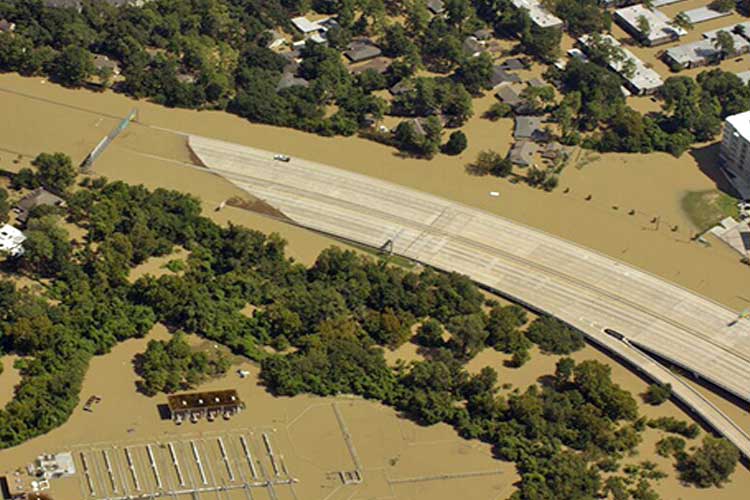
Fortunes Of Houston’s Industrial, Office Sectors Diverge In Wake Of Hurricane Harvey
![]() With recovery and restoration projects now fully underway across the metro area, demand for construction materials — wood, sheet rock, concrete — is set to rise…
With recovery and restoration projects now fully underway across the metro area, demand for construction materials — wood, sheet rock, concrete — is set to rise…
As the flooding in Houston from Hurricane Harvey begins to recede and more properties become accessible, commercial real estate firms are beginning the long, tedious process of figuring out the full magnitude of the destruction.
It will likely be months before the full extent of the property damage throughout Houston is known. But the fortunes of certain classes of commercial real estate are already coming into focus.
Metro Houston’s industrial market, which according to CoStar Group has experienced positive net absorption for 10 consecutive quarters, appears to be an immediate beneficiary of the storm. With recovery and restoration projects now fully underway across the metro area, demand for construction materials — wood, sheet rock, concrete — is set to rise. These products will need to be stored in warehouses and distributed throughout the metro area.
This influx will likely put a dent in industrial vacancy, which rose from 5.3 percent to 5.6 percent between the first and second quarters. Rents for warehouse assets, which declined by 1 percent during the second quarter, should also rebound from the recovery effort.
“On the industrial side, our people have seen a spiked level of demand that will result in more absorption,” says Tim Relyea, executive vice chairman of Cushman & Wakefield’s Houston office. “Not just in the short term, but with regard to three- to five-year commitments from companies that have to be here to assist with the recovery effort.”
Relyea adds that his firm is projecting a 5 to 10 percent increase in overall costs for renovation and restoration projects, as well as for new construction deals, before competition from material providers and subcontractors seeking a piece of the recovery pie restores prices to normal levels.
Steve Ash, managing senior vice president of Houston-based Transwestern, notes that the widespread loss of residents’ material goods, which will presumably need to be replaced, also bodes well for the industrial sector.
“Industrial assets remain a bright spot in Houston,” says Ash, whose firm manages and leases about 40 million square feet, mostly office and industrial, throughout metro Houston. “With the expanding needs of service companies and the need for distribution of replaces and lost goods, the sector should stay strong.”
Office Sector Takes Another Hit
On the flip side, office properties, particularly those in the southwestern sub-markets and along the 50-mile Buffalo Bayou corridor, were hit hard, according to Neal Golden, Texas regional manager and vice chairman at Newmark Knight Frank (NKF). The company employs more than 100 people in Houston.
“While exact numbers are not known, our research department has found that certain sub-markets — Southwest, Greenspoint, Far West/Katy — were extremely impacted in terms of office damage,” says Golden.
A recent report from NAI Partners’ Houston office confirms these observations. The report found that out of 60 office properties surveyed along the Buffalo Bayou corridor, 25 were impacted by the flooding.
Still, Golden sees a silver lining for the metro’s office sector.
“We are anticipating up to a 10 percent decrease in vacant sublease space as firms look for space to house employees who may have been displaced by building damage elsewhere,” he says.
An uptick in subleasing activity may temporarily benefit an office market that has been plagued by three years of negative rent growth and a vacancy rate of 16 percent at the end of the second quarter.
Since the beginning of the oil slump in late 2014, asking rents for Houston office properties have been about $3 per square foot below the national average, according to CoStar. During that stretch, the market has delivered more than 5 million square feet of new space per year during on average.
Ultimately, however, this subleasing activity is neither expected to increase beyond the recovery period nor have a long-term impact on absorption in the metro’s office sector.
And while a good chunk of Houston’s office-using tenants have resumed business operations, the fact remains that flooding is thought to have occurred across 30 percent of Houston’s gross leasable commercial space.
That translates to approximately $55 billion in property damage, according to NKF’s research.
This story was originally published by REBusiness.






